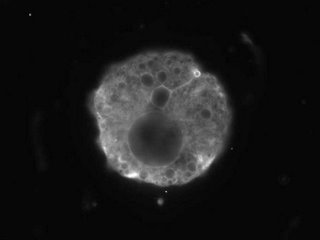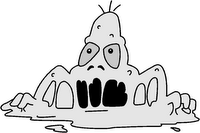I got a really good question today about exercise and training. Thought it might be kind of informative so I put it up here as well.
Question: fat burning zone???Does anyone know how and if this really works? I went for a run (if>you can call it that) with a friend and it was the most painful thing>to do becuase we were staying in our "fat burning zone". Her father>lost over 30 lbs using a monitor and staying in the FBZ, so he bought>her one. She has always been a runner and nothing has changed on her>body until she started staying in her FBZ. She was 131lbs, 27% body>fat and now she's 122lbs, 22% body fat. She lost 9lbs in 1.5 months.>This is completely different then I've evered trained. It was so hard>to go that slow and easy. But all the "hard" training I do has not>helped me get rid of the extra weight I would like to so I can improve>as a triathlete. I wonder if I should incorporate some of these>slower, steadier workouts in.
Answer:From what I've heard, the "experts" in the exercise community advocate exercising at a higher intensity rather than staying in the "fat burning zone." The original rationale behind the fat burning zone was that when you're exercising at a slower rate, your heart rate is slower, and the calories burned come from a larger percentage of fat than from glycogen (glucose). That is why long-distance triathletes also train at a slower pace. They want to avoid using up their limited glycogen stores since our fat stores are much greater and can provide a lot more energy than glucose. The downside is that it takes longer to break down fat to use for energy so when we begin training at a faster pace, our heart rates rise, our needs for energy increase, and the time it takes to breakdown fat is too slow to completely meet the demands of the body. As we train a bit harder, our energy comes from both fat and glycogen. Then, if we do a flat-out sprint, our body depends purely (100%) on glycogen at this point, which we can do for a very limited amount of time (under a minute). This is termed "anaerobic" and is not very useful for triathletes.
How does this apply to weight loss? For weight loss and exercise, your main concern is burning calories. It doesn't matter whether it comes from fat or glycogen. This is partly because glycogen can become fat and fat can become glycogen. In addition, our bodies use a mixture of both all the time. Basically, a calorie is a calorie and a net loss will lead to shedding of pounds. The more intensely you exercise, the more calories you burn so that is why exercise gurus advocate exercising at a higher intensity than the "fat-burning zone." You will burn more calories if you exercise at a higher intensity than a slower, fat-burning one during the same time period. On the other hand, the longer you exercise, the more calories you burn too. You don't want to go all-out and have to quit 5 minutes into your workout.
A lot of trainers nowadays are advocating interval training, where you alternate higher-intensity periods with low-intensity "recovery" periods. For instance, if you were biking, you could go hard for 5 minutes and then recover for 1 minute. The idea is that you can sustain this for a long period of time and still workout at a higher intensity. It also challenges your body more than if you were to maintain the same pace the whole time, which works different muscles, and also toasts calories.
Other Answers:These were other responses from some "experts" (excerise physiologists, nutritionists, etc.)
Response #1:Something I have noted from personal experience is that by doing high intensity training you increase your tolerance for discomfort and depending on the level of intensity improve your anaerobic threshold. As this improves you are able to train harder for the same period of time and burn more calories or train at the same level of intensity for longer. Basically the fitter a person is the more calories then can efficiently burn in the same time period. You will see fitness improvements with low fbz training but eventually you will be limited by lack of anaerobic fitness, this will really start to hurt athletic performances that are common in a triathlon. FBZ (fat burning zone) training is great for easing into to the world of exercise and fitness as will initially help prevent discouragement due to discomfort and early training injuries when people do too much too fast. However I doubt you will ever get down to 5-10% body fat or perform very well in competitions without mixing in some higher intensity stuff. I also feel that after a high intensity workout you continue to burn more calories for longer during the recovery period.
Response #2:The analogy I use is as follows:
Sit on the couch and we’ll burn the highest percentage of fat but obviously this training technique is not as effective as training in the FBZ. In the long run, 3500 calories equals 1 pound of fat and we burn the most calories per hour when we train “out of our comfort zone” or at higher intensities. The weight loss your friend has seen has to do with energy balance so obviously there was a situation where she was burning more than she was consuming too to allow for that weight loss to occur
Response #3:This is actually a big misconception, and if you're looking for a "training effect" for triathlon, then this FBZ training is not for you. The misconception is that you "burn more fat". Yes, you burn a greater percentage of fat when training at that slower pace, but you DO NOT ACTUALLY BURN MORE FAT than training with more intensity.
When you increase the intensities of your workouts, you will burn a greater percentage of glycogen, and less percentage of fat, but the amount of ACTUAL FAT BURNED will be greater than going slower, or staying in the FBZ, and you will also get a better training effect. I can't quite recall any specific numbers from the research I've done, but it's not a significant percentage difference, and the intensity makes a BIG difference in the results of the workout!
If you're trying to get faster for triathlon, then you need to be focused on your intensity, not FBZ. Does this mean you should not include any Zone 1 workouts in your training? No, you should! But it should not be the focus of your training. This will also be dependent on your triathlon race goals, such as sprint distance vs. Ironman.
Response #4:As with many concepts related to exercise training and the many related benefits, the effects and the rate of change can be quite specific to each individual, especially when we are talking about weight loss or body fat changes. However, there are recommendations that are backed by science that can be helpful when trying to maximize the fat burn training effect without jeopardizing your health or endurance performance level.
Specifically, related to your question "should I workout slower to optimize" fat burning?" Let me suggest to you that there is indeed a specific zone of intensity where you will burn the highest amount of fat calories per minute. Unfortunately, depending on the individual, those fat calories may not add up very quickly.
For example: during metabolic exercise testing and through a method call indirect calorimetry, scientists can evaluate the concentration of fat and carbohydrates that are utilized for energy at different intensities. Usually, during rest and at the lower exercise intensities we see the highest percentage of fat utilized. Keep in mind though, at rest and low intensity the overall calorie burn is quite low. So, if you are exercising in zone 1 you may be burning mostly fat, but your calories expended will take a lot longer to add up. Additionally, if you are not at a high fitness level you may be burning even less fat because you are doing even less work. For example, an elite level triathlete may be able to run an 8-minute mile pace with his or her heart rate in zone one (i.e., very lowintensity). Running at that speed will require a very generous amount of calories to sustain and most of it will be derived from fat. Alternatively, if I were running an 8-minute mile pace my level of intensity would be much higher and closer to, if not exceeding, the lactate threshold. That would put me at a zone 3 or 4 intensity level, which would require mostly carbohydrates since I'm already exceeding my fat burning zone. NOW KEEP IN MIND if I weighed the same as the elite athlete we would be burning close to the same amount of total calories to run that 8-minute mile pace. If we both ran an hour the elite athlete will have burned most of his or her calories from fat while I will have depleted much of my carbohydrate stores and very little fat due to "harder training".
QUICK REVEIW: As exercise intensity goes up so does the overall calorie expenditure, however the fat burn will usually increase only to a limited expenditure rate as other energy systems need to take over. Often, as your intensity approaches and surpasses the lactate threshold, metabolic testing reveals little to no fat calories expended and energy is derived from nearly100% carbohydrates. So, according to the above analogy you might surmise that I need to slow down if I am going to burn fat and ultimately lose body fat. However, things are not always how they seem. In reality my goal should be to become fitter so that when I run in zone 1 or 2 I am not doing a shuffle step or walk to keep my heart rate down. I do this by training at levels that stimulate continued improvement in my lactate threshold (LT). Training to increase my LT or sometimes referred to as the anaerobic threshold has been shown to be most effective when combining a variety of training levels. Specifically, sometimes I should train at or slightly above the lactate threshold (zones3-4) to stimulate LT overload adaptations and other times during longer bouts (zone 1-2) to enhance aerobic kinetics and fat burning adaptations. So there are different adapations at different intensities (i.e.,specificity of training).
Special Note: Recovery after the harder workouts is a key to seeing threshold improvements. As my threshold improves so does my sustainable pace and so does my ability to burn more fat calories and the total calories during exercise. Also, keep in mind the fact that burning off the extra body fat is dependent on how many total calories you expend at the end of the day as compared to how many you take in from food. So the additive effect of all exercise and activity will promote body fat loss.
Let me introduce a couple more energy/training related concepts that mighthelp you further understand the mechanisms involved with burning caloriesand losing body fat.
1. In the lab exercise scientists have discovered that exercise that is intense but sustainable (at or around your LT) for bouts up to an hour can have significant effects on how many calories you burn post exercise. There is a term for this called EPOC or excess post oxygen consumption. This concept suggests that you not only can burn calories during exercise but when sufficient work levels are sustained we can see additional calories, specifically fat, burned for several hours after exercise. However, usually individuals who are not very fit will have limited benefit from extra fat burned post exercise because they are generally not able to sustain work rates high enough to accumulate much of an additive effect from the fat burned.
SPECIAL NOTE: hard sustained exercise creates higher EPOC which alsorequires a longer recovery period because of the stress on the system and depleted energy stores.
2. There are studies that show elite endurance athletes who burn well over4,000 kcals per day often may only consume 2500-3000 kcals. These athletes continue to function and train for months on end and didn't necessarily continue to lose body fat (note: this low calorie intake is quite common among endurance athletes). Studies observed that the athlete’s metabolism adjusted to adapt to the limited energy intake by holding on to the stored fat. It was suggested that the training effect was also compromised due tothe lower fuel intake. The point I am making here is that how much and when you fuel your body can have an effect on your ability to use and burn fat. High stress loads with limited fuel restoration and recovery can affect metabolism for the worse. In summary, how to maximize your body fat burn is a comprehensive approach, not usually accomplished by quick and easy methods. We've all heard that there are no quick solutions like pills and starvation diets. Similarly, even the "fat burn zone" by itself is not as easy an answer as we might like.
Wow! That's a lot of great info. If you are overwhelmed, like me, here's a quick summary:
RECAP:1. Basically, a calorie is a calorie and a net loss will lead to shedding of pounds.
We burn the most calories per hour when we train “out of our comfort zone” or at higher intensities. You burn a greater percentage of fat when training at that slower pace, but you DO NOT ACTUALLY BURN MORE FAT than training with more intensity. Burning off the extra body fat is dependent on how many total calories you expend at the end of the day compared to how many you take in from food. So the additive effect of all exercise and activity will promote body fat loss.
2. Alternate higher-intensity periods with low-intensity "recovery" periods.
If you're trying to get faster for triathlon, then you need to be focused on your intensity, not FBZ.
Specifically, sometimes I should train at or slightly above the lactate threshold (zones3-4) to stimulate LT overload adaptations and other times during longer bouts (zone 1-2) to enhance aerobic kinetics and fat burning adaptations.
 Here's from last week's club Aquathlon (1000m swim/5k run)at La Jolla Shores.
Here's from last week's club Aquathlon (1000m swim/5k run)at La Jolla Shores. And they're off! (The fast guys. I'm in the back.)
And they're off! (The fast guys. I'm in the back.)











